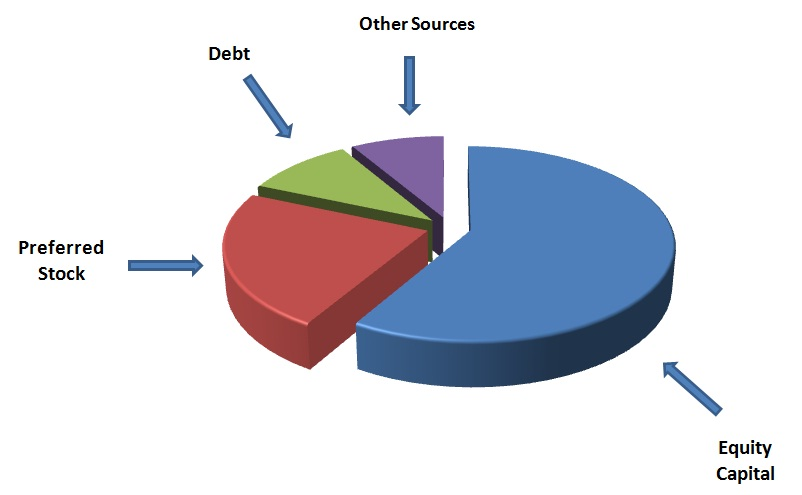A Comprehensive Overview: What Is Financial Structure?
Oct 13, 2023 By Susan Kelly
Introduction
What Is Financial Structure? The word "financial structure" refers to how a company finances its assets, which might include a variety of debt and equity instruments. Since there is less equity in the business, shareholders might get a better return on investment when debt is used as the primary source of financing. However, the company's enormous debt obligation makes this financial structure problematic. A corporation positioned as an oligopoly or monopoly is best suited to maintain such a leveraged economic structure since its sales, profits and cash flows can be accurately predicted.
On the flip side, a company operating in a highly competitive industry cannot afford a high level of leverage since its earnings and cash flows are too erratic to maintain such a burden without risking insolvency. As a result, a company in this predicament must shift its capital structure toward more equity, which does not necessitate repayment. In light of this, the optimal debt-to-equity ratio is one of the most pressing concerns for a chief financial officer to address.
There is a wide range of organizational structures available to businesses. Organizations can be either public or private. While financing options vary greatly, the basic foundation for managing capital structure is the same in each case. Debt capital is money borrowed from investors that must be paid back with interest. Shareholders invest capital, and in return, they receive either a stake in the company and a cut of any future profits or distribution of the company's earnings. The optimal debt-to-equity ratio for every business will vary according to individual circumstances.
Factors Affecting Financial Structure

As was previously indicated, debt and preference shares are cheaper sources of capital than common stock. A company's goal should be to minimize its cost of capital. When seeking financing, one must be aware of the caveats associated with using equity. Excessive diluting or selling of one's own in a corporation can result in the loss of influence in decision-making and a controlling share in the business. The use of debt, often known as leverage, can have positive as well as negative outcomes. As a cheaper source of capital than stock and as a multiplier for even a little increase in profit, this is good news for the ratios that measure the success of an investment. However, it may wind up having some unexpected results. In contrast, it risks unintentionally increasing its financial risk and causing solvency issues.
Flexibility is crucial, and the financial structure should be restructured to respond to changing conditions. It may be difficult for a firm to exist if there is excessive rigidity. Credibility and Size of a Company: Due to insignificant cash flows, a lack of assets, and the absence of a guarantor for the security of a loan, small-sized companies, new companies, or companies with a poor credit history may not have unrestricted access to the debt because they do not have a credit history. As a result, it may be required to dilute its existing stake to obtain capital.
Public Versus Private
Both private and public companies start with the same building blocks regarding organizational structure, but public companies have a few more restrictions. Both corporations and limited liability companies can distribute shares to their shareholders. Private equity is created and distributed in the same way that public equity is. Still, it is only made available to a limited number of investors rather than the general public, as it is on a stock exchange. As a result, raising equity capital differs substantially from an official initial public offering (IPO). A private company's market value may alter over time as a result of multiple rounds of equity financing. The support of an investment bank allows mature corporations who elect to issue shares in the public market to pre-market the offering and value the initial claims. Following an IPO, all shareholders become public shareholders, and the business's market capitalization is then computed using the number of outstanding shares multiplied by the current share price.
Debt Versus Equity

Financial managers can shape company finances in several ways, including using debt and equity. The economic make-up of a business could change depending on the level of interest in either form of investment capital. To maximize returns on investments and reduce costs, companies need competent financial management. Financial managers look at the weighted average cost of capital (WACC) to optimize the capital structure. WACC measures the average corporate payment to investors for all money. The Weighted Average Cost of Capital (WACC) considers a corporation's debt and equity payout rates.
Conclusion
The issues of money, credit, and finance are at the forefront. Savings are encouraged and directed to where they will do the most good within the framework of a financial system. Everyone who invests or uses savings is a part of this system.

Jan 13, 2024 Susan Kelly

Jan 11, 2024 Susan Kelly

Nov 02, 2023 Susan Kelly

Oct 12, 2023 Susan Kelly

Oct 13, 2023 Susan Kelly

May 14, 2024 Susan Kelly